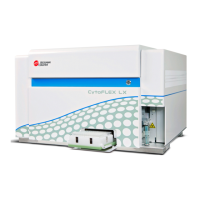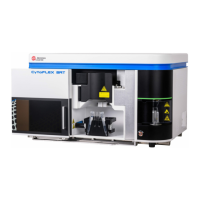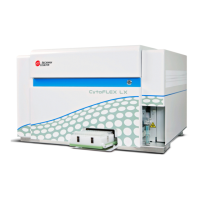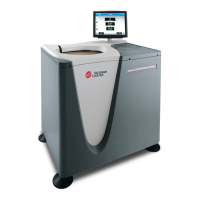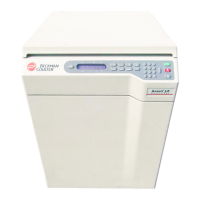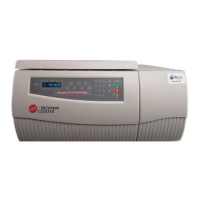PN 177196BB
8-8
SYSTEM DIAGNOSTICS AND MAINTENANCE
RECOGNIZING NORMAL INSTRUMENT OPERATION - CYCLE DESCRIPTION
C Special Instructions
The instrument must be powered down and the left- and right-side panels and the top cover
must be removed.
D Topic Notes and Tasks
1. One important tool for troubleshooting an instrument is being familiar with what the
instrument does when it is operating normally.
2. This topic walks you through the normal flow of a sample in the instrument as it is
aspirated, diluted, and analyzed.
a. The emphasis in this topic is on how the sample is prepared for analysis and where
the analysis takes place.
b. When you have completed this topic, you may want to follow it with a review of the
measurement principles and characteristics covered under Heading 7.2, DATA
ANALYSIS - AN OVERVIEW OF THE DILUTIONS AND MEASUREMENTS, and
Heading 7.3, DATA ANALYSIS - MEASUREMENT PRINCIPLES, in this Training
Guide.
3. The interlocks will prevent you from cycling this instrument with the doors open and
covers and panels.
a. If the Key Operator is the trainer, this topic must be done as a walk-through with
the power off. The illustrations in this section are provided to help the trainee
visualize the cycle flow.
b. If a Service Representative is the trainer, this topic can be done as a walk-through or
the Service trainer can power up, log in as Service, and cycle blood while explaining
the cycle flow.
4. Whether you do this as a walk-through or as a wet demonstration, you are exposing
yourself to mechanical and biological hazards and must take appropriate precautions.
5. The following explanation assumes the CBC/DIFF test panel is selected. If the CBC test
panel were used, the dilution made in the DIFF bath would be skipped.
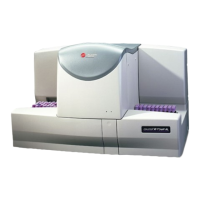
